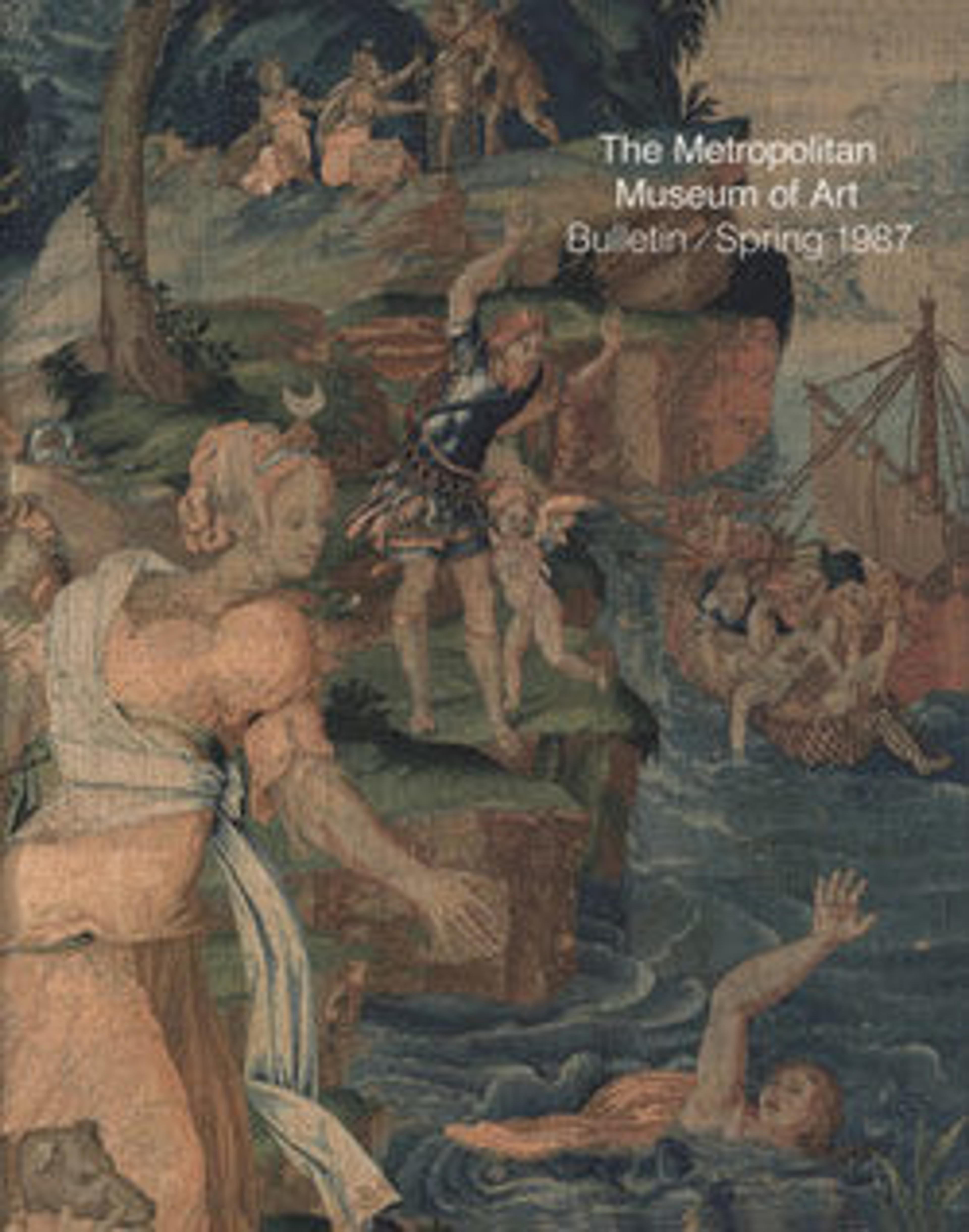The Twelve Ages of a Man: The Second Three Ages (18-36), or Autumn
This is the third in a set of four tapestries illustrating the life of a man as divided into twelve periods of six years. Bacchus, in the center, stands for the autumn of life; the symbols and occupations of three months, July, August, and September, represent the years from ages 36 to 54. The stories show the centaur Chiron sharing his knowledge by teaching medicine to the young Aesculapius; Joseph directing the gathering of the harvest in anticipation of the lean years to come; and Hercules gathering the golden apples of the Hesperides, the last of his twelve labors.
Artwork Details
- Title: The Twelve Ages of a Man: The Second Three Ages (18-36), or Autumn
- Designer: Probably after a design by the Workshop of Bernard van Orley (Netherlandish, Brussels ca. 1492–1541/42 Brussels)
- Date: ca. 1515
- Culture: Netherlandish, Brussels
- Medium: Wool, silk (16-20 warps per inch, 6-8 per cm.)
- Dimensions: H. 175 x W. 286 inches (444.5 x 726.4 cm)
- Classification: Textiles-Tapestries
- Credit Line: Gift of The Hearst Foundation, in memory of William Randolph Hearst, 1953
- Object Number: 53.221.3
- Curatorial Department: European Sculpture and Decorative Arts
More Artwork
Research Resources
The Met provides unparalleled resources for research and welcomes an international community of students and scholars. The Met's Open Access API is where creators and researchers can connect to the The Met collection. Open Access data and public domain images are available for unrestricted commercial and noncommercial use without permission or fee.
To request images under copyright and other restrictions, please use this Image Request form.
Feedback
We continue to research and examine historical and cultural context for objects in The Met collection. If you have comments or questions about this object record, please contact us using the form below. The Museum looks forward to receiving your comments.
